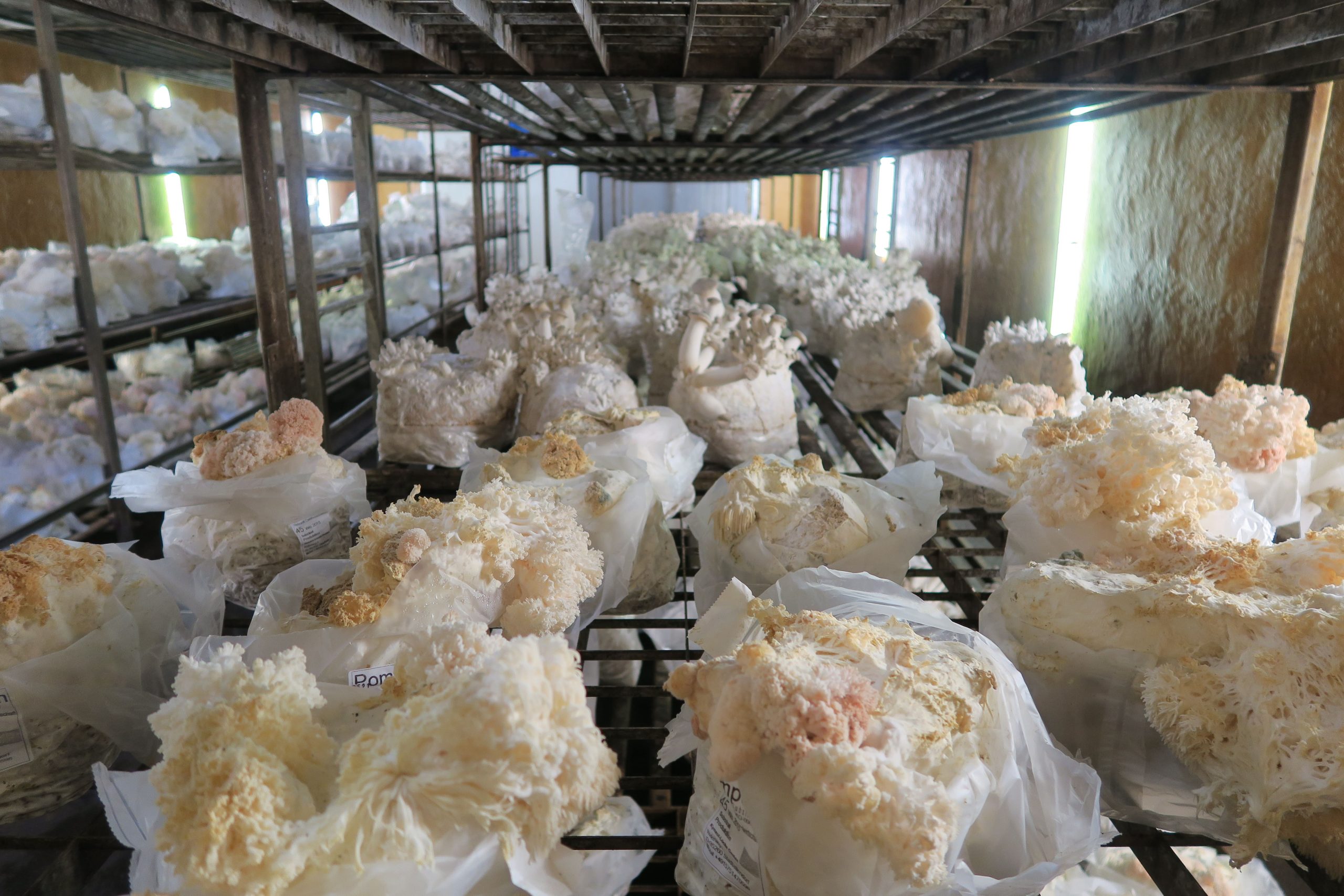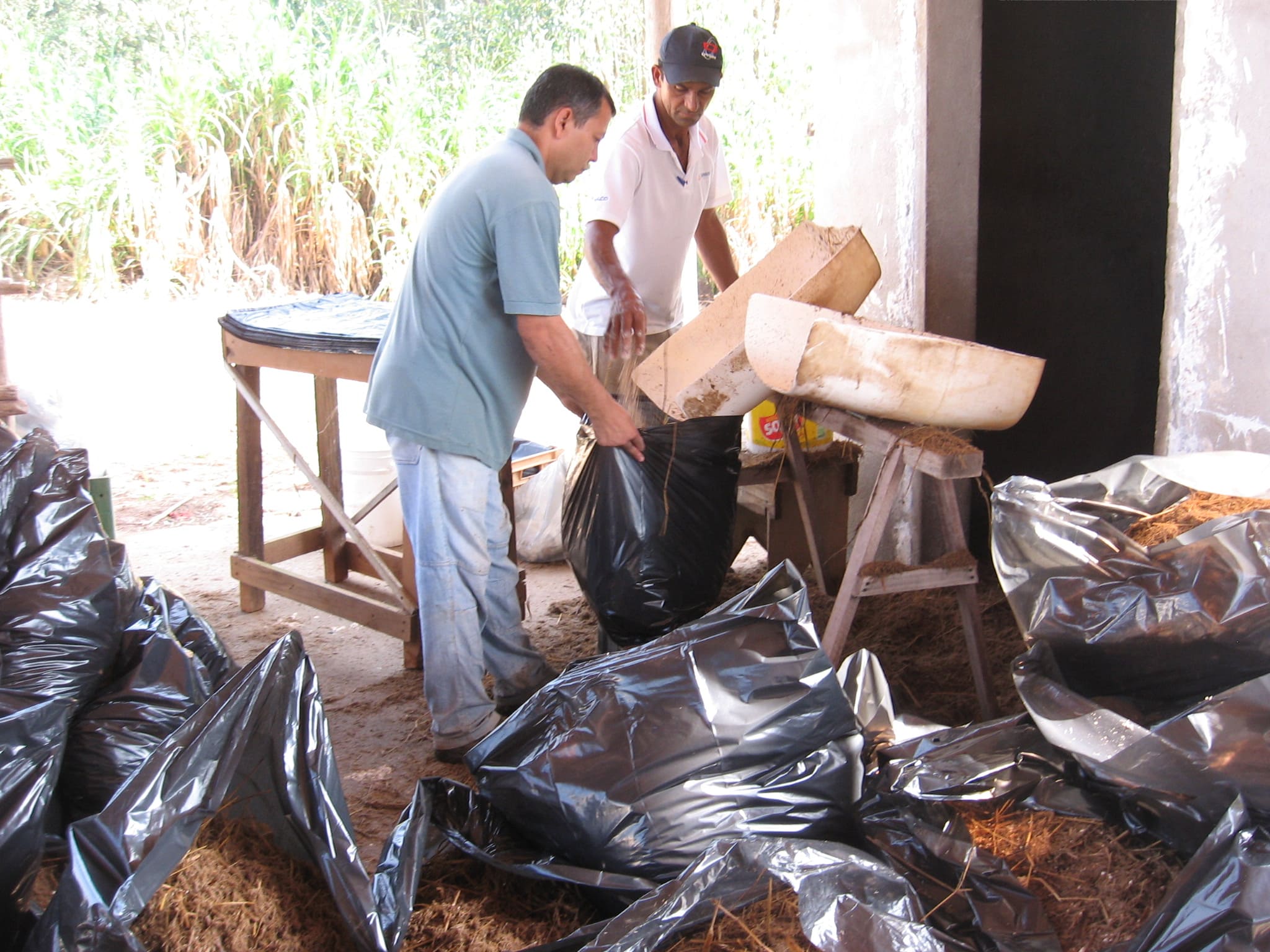Table of contents
Mistake 6: “It won’t happen to me.”
Face it. This is not true.
A true problem free production only exists in Utopia. So you will have problems. And problems almost always lead to infections.
So arm yourself for when things go bad and don’t let small problems become bigger. Tackle them immediately.
There are only a few things you can do:
➞ Use a reliable production system. As you saw in the pdf about ‘the best production systems on the market’, there are only a few good options, depending on your local situation. Go for one of them.
➞ Never change more than one thing at a time. What happens if you decide to grow one additional species? Or introduce a new machine? This will definitely upset the existing balance in your farm. Make sure that you are 100% informed and ready before you do this.

➞ Have a backup ready at any time for in case something goes wrong. What happens when you fall off a ladder and cannot work for a month? Or if you spawn supplier goes out of business? Or if a machine breaks down? Have a backup plan ready at any time.
So always be alert. Infection pressure is never zero.
It is always there in the background, waiting for a hole in your armour. Don’t leave any holes.
Mistake 7: “My pasteurising tunnel is functioning perfectly and still I get green moulds. It’s so frustrating.”
That is a wrong statement. What is wrong?
➞ First
A pasteurising tunnel has as a main goal to pasteurise the substrate. That means: killing all the moulds and killing all the mould spores. As an extra bonus, it also kills a large number of bacteria.
If, however, there are ‘steam channels‘ from bottom to top through the substrate, or if the filling had not been done properly, there may be large local differences in temperature. This can result in spores of green (or other) moulds locally surviving in the substrate. Make sure to measure in different locations of the pile: top, bottom, etc.
➞ Second
Even if the substrate is perfectly pasteurised, there is no guarantee that you will not get green moulds afterwards.
When unloading the substrate from the tunnel, it will immediately be reinfected with moulds unless it is done in a perfectly clean environment: clean air, clean machines, clean blocking machine, clean phase III tunnel.
If this is not the case, sporulating green moulds will be visible after one week. But if your substrate was prefermented the right way, and you inoculate heavy enough, a few airborne spores shouldn’t bother you. They will be outcompeted by the inoculum.
If you still have a large mould infection, though, they may not be spores getting mixed in, but living mould hyphae. Those are 3 days ahead of mould spores, which makes them fast enough to become a serious problem. Search for one of the following causes: infected spawn or infected machines. Both have the same end result: green bags all the way.
➞ Third
Pasteurisation is not your only protection against green moulds. An extra phase can be added before the start of pasteurisation.
During the so- called preconditioning phase – prefermentation – numerous bacteria will digest free nutrients, while decreasing the pH, so as to create an environment which is not favourable for imperfect moulds.
Mistake 8: “I don’t understand. I use the best disinfectant there is.”
You are betting on the wrong horse. Disinfectants are not your best protection against infections. Good cleaning is much more important.
There are only a few disinfectants on the market that kill mould spores, but they are all so powerful that they kill humans too. In fact, they are so dangerous that it’s only in very exceptional circumstances that you would use them. Even better: don’t use them at all.
Prevention is better than cure. In well-balanced production systems, like in most spawn companies or in the bottle production farms in Japan or South-Korea, no (or very little) disinfections products are used. There is a very strict cleaning schedule and the regulations are extremely strict.
Mistake 9: “I’m saving money by putting all these specials in one room.”
Please stop doing this. Every species you grow has very specific growing conditions and has different preferences. Would you mix tomatoes and paprikas in the same greenhouse? Yes, if you were a hobbyist. But no, if you’re a professional.
Do you want to grow the mushrooms properly or not? Then do not mix different strains in one room.
Let’s take one example: mixing Nameko mushrooms, which require a 95-99% humidity, with a Shiitake, which requires a 80-85% humidity. If you put these in the same room, you’ll set the humidity to 85-90%? Too much for a Shiitake, to little for a Nameko. On top of that, their cultivation cycle is not compatible.
Also: do not mix different batches of one species in the same room. Doing that, some blocks will have finished fruiting while others haven’t even started yet. Result? Many flies and moulds on your substrates and mushrooms.
It still happens too often that the production of the specialty mushrooms is seen as a ‘little side business’, so why spend any time and money on it?
The reasons why you should spend the time and money:
➞ The profit you can make with the cultivation of wood fungi is much better than with White Button or Brown Button Mushroom. Unless you disregard this advice and your yield is too low.
➞ If you don’t do well, your business won’t last much longer. There are other people getting interested in the cultivation of these specials and they will not mix strains and batches. As a result, their quality and prices will be better.

Mistake 10: “My dad always did it like this and it always worked for him.”
Times have changed. 30 years ago, your dad worked with the knowledge and the technology that was available at that time. But the industry has not been standing still since.
Several things have changed:
➞ Computers have made their entry into every part of the production chain. From culture over spawn to substrate to mushrooms, computers rule the company. They are more capable of calculating the air temperature and volume than any employee ever could. If used properly they can also help you to save on climatization costs.
➞ Growing wood fungi used to be a thing of small farms, or of a White Button grower who had one or two spare rooms. But this trend has changed. With an estimated growth of 5-10% per year over the last 10 years alone, the sector is booming. We are not talking about tiny quantities any more and more and high-tech is slowly making its entry. Times change and we need to follow that change.
➞ More and more species are being recognised as edible and as “a thing to have”. But with every species comes a specific growing method. Surely your father did not foresee this.
➞ Big farms are being built in the EU and the US, using a bottle production system that has its origins in Japan and South-Korea. For example, a huge King Oyster farm has started its operations in Germany. This will influence markets and local production units, not only in terms of quantity, but also in terms of quality standards. Time to prepare ourselves for the future.